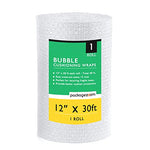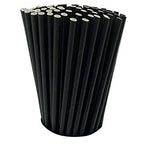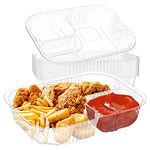You have no items in your shopping cart.
Metal recycling plays a crucial role in preserving our environment and conserving valuable resources. It involves the collection, processing, and transformation of various types of metals, turning them into raw materials that can be used to manufacture new products. Metal recyclers are the unsung heroes of sustainability, helping to reduce waste, energy consumption, and greenhouse gas emissions. In this article, we will explore the world of metal recyclers, their importance, the recycling process, and some frequently asked questions about this industry.
Metal Recyclers: Champions of Sustainability
Metal recyclers are the key players in the recycling industry, as they specialize in the collection and processing of scrap metals. They work diligently to extract maximum value from discarded metal items, diverting them from landfills and minimizing the need for extracting virgin materials through mining. Metal recyclers are essential in conserving natural resources and reducing the environmental impact of metal production.
The Metal Recycling Process: From Scrap to New
Metal recycling involves several stages that ensure the effective transformation of scrap metals into reusable materials. Let's delve into the process:
1. Collection and Sorting
The journey of metal recycling begins with the collection of scrap metals from various sources. These sources can include industrial waste, household items, construction materials, and even discarded vehicles. Metal recyclers employ advanced techniques to sort the collected scrap metals into different categories based on their composition and properties.
2. Transportation
Once the scrap metals are sorted, they are transported to recycling facilities. Metal recyclers use specialized vehicles and equipment to handle and transport the materials safely. This step ensures that the scrap metals reach the recycling facilities without causing harm to the environment or public safety.
3. Processing and Shredding
Upon arrival at the recycling facility, the scrap metals undergo further processing. This typically involves shredding the metals into smaller pieces using heavy-duty machinery. Shredding helps to increase the surface area of the metal, facilitating subsequent steps in the recycling process.
4. Magnetic Separation
After shredding, the metals are subjected to magnetic separation. This process utilizes powerful magnets to separate ferrous metals (containing iron) from non-ferrous metals (such as aluminum, copper, brass, and stainless steel). Magnetic separation enables efficient sorting and ensures the purity of the recycled materials.
5. Melting and Purification
The non-ferrous metals obtained from the magnetic separation stage are melted in large furnaces at high temperatures. This melting process helps to eliminate impurities and allows for the formation of homogeneous metal alloys. The purified molten metal is then cast into molds or transformed into various shapes for future use.
6. Refining and Alloying
To achieve the desired metal properties, additional refining and alloying steps may be necessary. Metal recyclers carefully monitor and adjust the composition of the molten metal to meet specific requirements. Alloying can enhance the strength, durability, and corrosion resistance of recycled metals, making them suitable for various applications.
7. Manufacturing of New Products
The final stage of the metal recycling process involves transforming the recycled materials into new products. Metal recyclers supply the recovered metals to manufacturers, who use them as raw materials for producing a wide range of goods, including automobiles, appliances, packaging materials, construction materials, and more. This closed-loop system ensures that metals can be recycled and reused indefinitely, reducing the need for resource extraction.
FAQs about Metal Recyclers
-
Q: What are the benefits of metal recycling?
A: Metal recycling offers numerous benefits, such as conserving natural resources, reducing energy consumption, decreasing greenhouse gas emissions, minimizing landfill waste, and supporting a sustainable economy. -
Q: Can all types of metals be recycled?
A: Most metals can be recycled, including aluminum, copper, brass, stainless steel, iron, and various alloys. However, some metals, such as mercury and lead, require specialized handling due to their hazardous nature. -
Q: How do metal recyclers ensure the quality of recycled metals?
A: Metal recyclers employ rigorous quality control measures throughout the recycling process. They use advanced technologies, including spectroscopy and X-ray analysis, to verify the composition and purity of the recycled metals. -
Q: How does metal recycling contribute to the reduction of greenhouse gas emissions?
A: Metal recycling significantly reduces greenhouse gas emissions compared to primary metal production. Recycling metals requires less energy, as it avoids the energy-intensive processes involved in mining, extraction, and refining. -
Q: Are there any environmental regulations that govern metal recycling?
A: Yes, metal recyclers must adhere to environmental regulations and obtain necessary permits to ensure responsible recycling practices. These regulations govern waste management, air and water pollution control, and worker safety. -
Q: Can individuals contribute to metal recycling efforts?
A: Absolutely! Individuals can participate in metal recycling by responsibly disposing of their metal waste in designated recycling bins, supporting local recycling programs, and choosing products made from recycled metals.
Conclusion
Metal recyclers play a vital role in promoting sustainability and reducing the environmental impact of metal production. Through their expertise and dedication, they help conserve natural resources, decrease energy consumption, and minimize waste. By supporting metal recycling initiatives and choosing products made from recycled metals, we can all contribute to a more sustainable future. So, let's embrace the power of metal recycling and be part of the solution!








